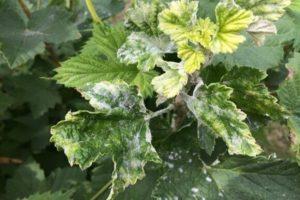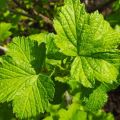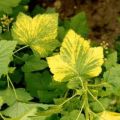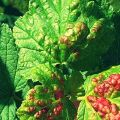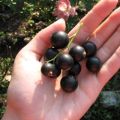Causes and methods of dealing with black currant terry, what to do for treatment
Currants are often exposed to various diseases and pests. On your site you can observe how fragrant currant leaves are wrapped from aphids or rust, the berries fall for no reason before they are ripe. This should also include the terry red and black currant. What kind of illness, why it occurs and how to cope with it, it is worth knowing in advance.
Description and causes of the disease
Important! The main reason for the infection of bushes with terry is the presence of a currant bud mite. Infection with the parasite occurs during the renewal of plantations. The mite can be introduced during the planting of new seedlings. Another option is to use raw garden tools. If you cut off the branches of infected young animals, and then a healthy bush, then the disease will certainly be transmitted.
The kidney mite is only a carrier of the disease. The disease itself is the vital activity of a microscopic virus, which develops very actively in the vessels of the plant. Moving along with the juice along the shoots, it affects the entire bush. If in the first year of life the ailment may not manifest itself, then as the currant gains strength, it begins to be oppressed by the microplasma virus. Then not only foliage, but also inflorescences suffers.
As a result of the complete infection of the currant with the causative agent of terry, there is a degeneration of the variety, its return to a wild-growing state. In another way, the disease is called reversion of black currant.
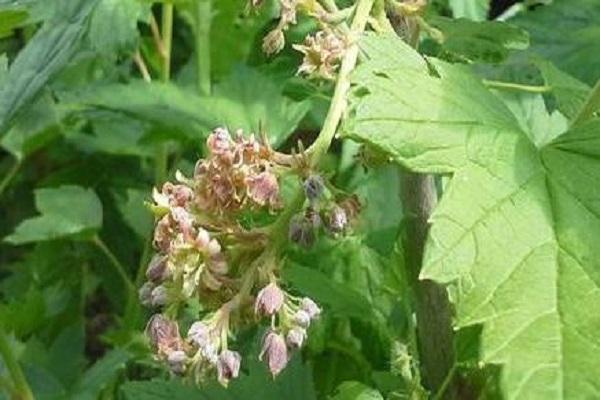
Signs of terry
Terry is a serious infectious disease of black currant bushes, leading to the degeneration of varieties and the plantings themselves. The disease can be detected by the following symptoms:
- The presence of a large number of branches with small leaves that do not have a specific currant smell.
- In addition to greenery, terry can be determined, and often it happens, by flowers. If the currants normally have yellow flowers, in the place of which, after flowering, a green berry appears, then the diseased plant has pinkish or purple flowers. We can say that they are empty, after them no ovary is formed.
- At the end of each shoot, defective three-lobed leaves of a dark green color appear.
- Small veins are practically not visible on the leaves.
- The diseased bush blooms later, the berries are very small.
If you find terry in time and start treatment, then it is possible to save the berry. Otherwise, you will have to part with the new purchased variety of large currants, without waiting for fruiting.
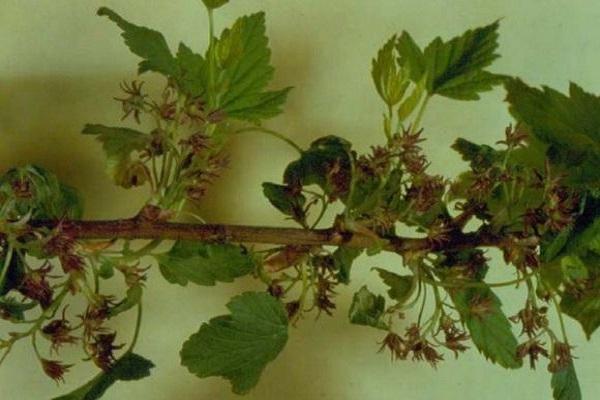
How bush infestation spreads
According to gardeners, not only the kidney mite is a carrier of the virus, but also other insect pests:
- aphid;
- herbivorous bugs;
- spider mite.
Pathogenic microorganisms can spread during the reproduction of the bush: during cuttings, separation of lateral offspring. In any case, the planting material is already infected with the virus. It is difficult to determine the disease of young seedlings, since outwardly the virus may not manifest itself in any way. But a year or two after planting, the plant will slowly begin to die.
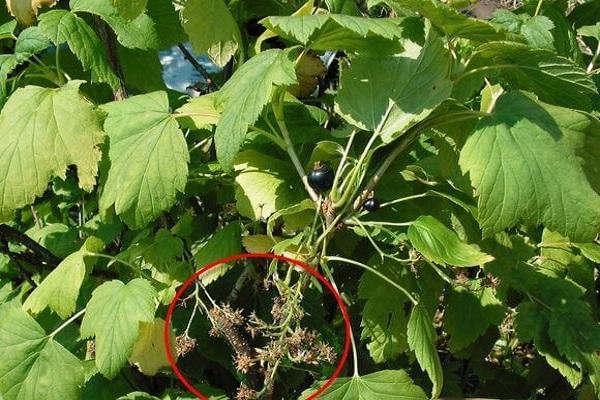
Defect control methods
Terry is a very dangerous disease of berry plantations. You cannot completely get rid of it. Even if the plant is destroyed at the root, the virus is still present in it. Therefore, it is impossible to graft young shoots on a stump where a diseased bush grew.
Important! The virus can be destroyed only with the bush.
Then how to deal with terry? The main thing is to protect your lands from the attack of the "enemy", or to prevent the spread of an existing pathogen. First of all, this applies to the kidney mite:
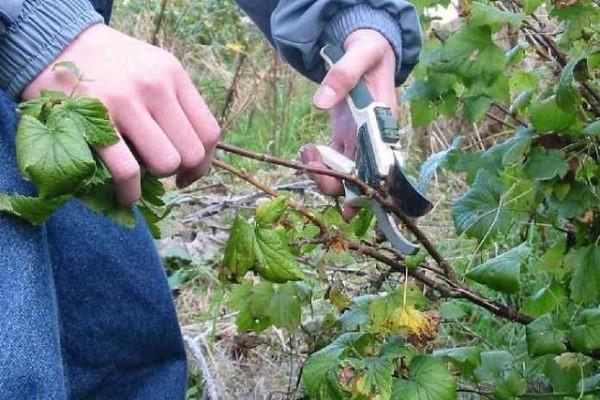
- Treatment of the viral terry black currant occurs by pruning shoots affected by a kidney mite and removing diseased kidneys. In spring, mite colonies on the kidneys are especially noticeable. Not having time to open, they become swollen, not dense. These buds should be cut off and destroyed. If there are many buds, then the entire shoot is removed. The procedure must be performed before bud break.
- Hot water is very effective against ticks. Infected shoots are pruned to healthy wood. The remaining branches are tied together and scalded with water, the temperature of which should be up to 80 degrees. Cuts of diseased branches are always destroyed; in the spring you can burn them with last year's foliage.
- To combat the terry currant and spider mite, you can use special preparations that have insecticidal properties. These include: colloidal sulfur, Lepidocide solution, Bitoxibacillin, Fufanon, Akarin and others, which are sold in specialized stores. It is important to dose the product according to the instructions.
Terry red currant is a similar disease. Accordingly, the treatment is the same. All the procedures described above can be used to preserve the plantings of red and white currants.
Folk methods of dealing with terry
Among the folk methods of treating plants from kidney mites and aphids, carriers of the virus, the following are distinguished:
- tobacco dust, infusion;
- infusion of garlic;
- infusion of onion peel.
All treatments must be performed only as soon as pests are detected.
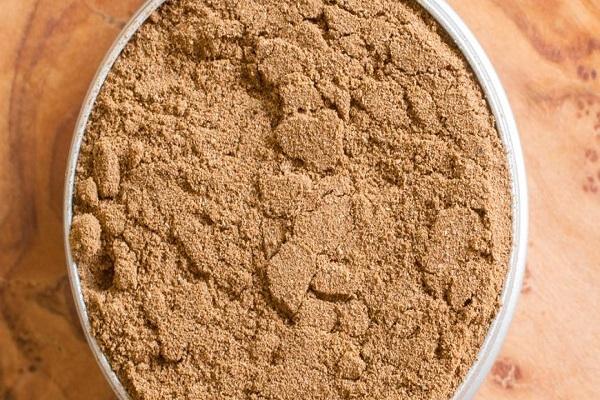
Preventive actions
It is very important to follow the following recommendations of experienced gardeners:
- When buying new seedlings, the material is carefully selected. The best purchase is considered to be seedlings from a nursery or from well-known and proven gardeners.
- It is necessary to monitor the condition of the young, since outwardly the disease may not manifest itself for about 4 years. In this case, the purchased bushes are planted away from an adult berry.
- When propagating currants by cuttings, only healthy currant bushes are chosen as a mother plant.
- You should choose varieties that are resistant to diseases and pests.
- Shrubs are regularly examined for damage by a kidney mite.
- Timely and correct pruning. If the shoots are cut off strongly, then young offspring will appear from the root in large numbers. They attract pests such as ticks and aphids.
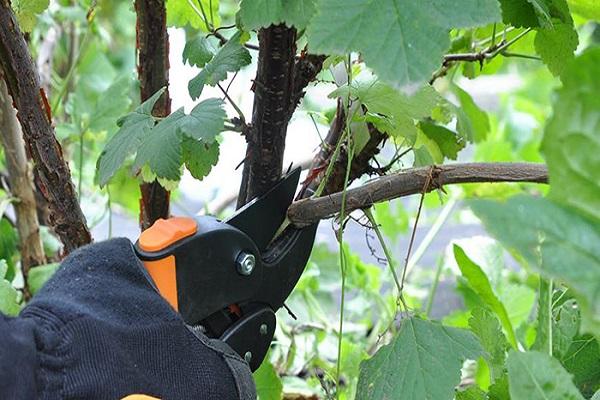
Only an integrated approach will help to cope with massive infections of currant bushes with terry.
Any of the species and varieties of currants is annually attacked by a huge number of pests, but the most dangerous is the terry virus.It is cunning in that the only method of getting rid of it is the complete destruction of plantings. Preventive measures are aimed only at combating its vectors.

